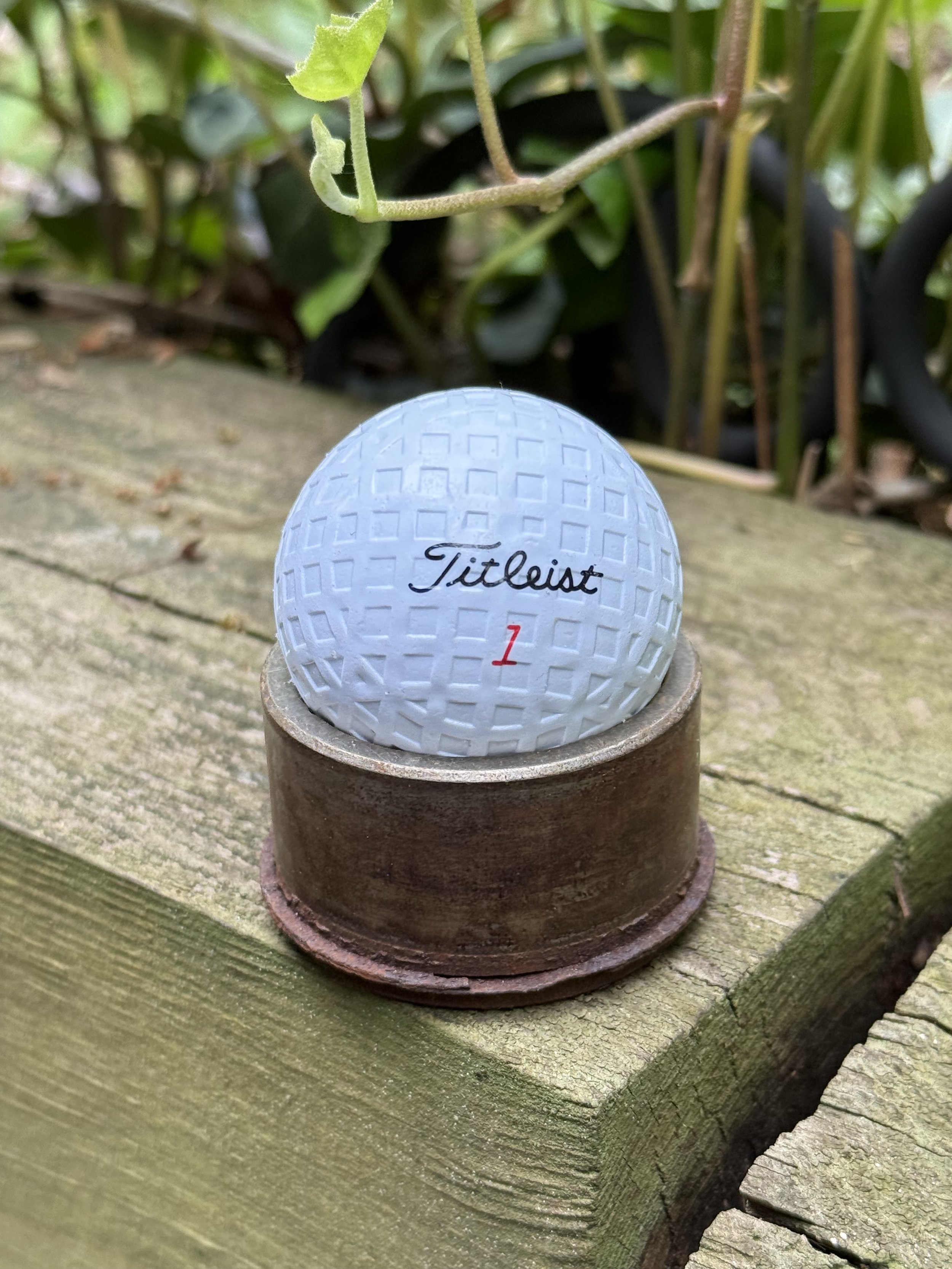Vintage Pattern Golf Balls
The ideal golf ball to play with the slower-tempo swing necessary for hickory golf clubs is a modern low- to mid-compression ball (65 or less). I’ve tried many different varieties over the years and my two favorites are the Titleist TruFeel (around 50 compression) and Callaway Supersoft (38 compression). Thing is, if I’m playing antique clubs and wearing period-correct clothing, I want my modern ball to look the part, too, without sacrificing the feel I’ve come to love with higher-quality modern low-compression balls. That’s why I started remolding the covers of my TruFeels and Supersofts with vintage patterns:
1920s Mesh Pattern
The quintessential golf ball pattern during the golden age of hickory golf was the mesh pattern. Most of the golf balls produced during the 1920s and 1930s featured mesh patterns until mass production of the more aerodynamic dimple pattern began in the 1940s.I’ve been making my own mesh-pattern balls ever since I lucked into finding an authentic, 1920s-era cast-iron mold on eBay a few years ago. One of the first videos I posted on the Hickory Hacker YouTube channel was a tutorial on how I use that mold and a toaster oven to remold the cover of my Titleist TruFeel balls. Since then, I’ve refined the process and have been very pleased with the consistency and efficiency of remolding TruFeel balls versus any others. I’ve also discovered that the Titleist logo/number and mesh pattern combo looks really sharp and is a true conversation starter when I tee it up, no matter what clubs I’m playing.
I offer my mesh pattern balls primarily as Titleist TruFeel balls with the logo and number, but I can also fulfill custom orders for balls where the logo and/or number are removed. I can also remold Callaway Supersoft balls with the mesh pattern mold, but those will be blank with no logo or number.
$7 apiece ($5 for Hacker Backers)“Bounding Billy” Line-Cut Pattern
Before the mesh pattern became the dominant pattern during the 1920s and 1930s, golf balls featured what’s known as a line-cut pattern. This pattern was found primarily on the balls made of gutta percha in the gutty era during the 1890s, as well as the first rubber-cored Haskell “Bounding Billy” balls that came on the scene in 1898 and would eventually change golf forever in the early 1900s. Not surprisingly, gutty-era veterans were taken aback at first by the dramatic increase in performance of the new rubber-core ball versus the solid gutta percha ball, and golf clubs, playing techniques, and even course lengths were soon modified to accommodate the further-traveling ball.I’ve found that blank Callaway Supersoft balls remold best with the line-cut pattern mold I use, and I recommend these balls for gutty golfers who want to play their gutty clubs but are looking for more distance than they can get playing with a synthetic gutta percha ball like the McIntyre Park. In this way, you’ll also get a glimpse of what it would have been like to play gutty golf with a “Bounding Billy” at the turn of the century, as well as keep up with the other golfers in your group using modern golf balls.
COMING SOON!
Please use the contact button below to inquiry about availability and shipping, and please specify the pattern, ball, and quantity you’re interested in purchasing.


